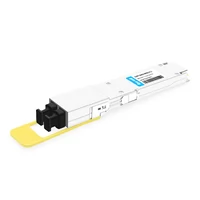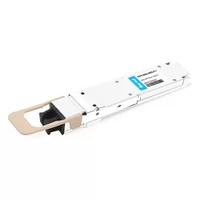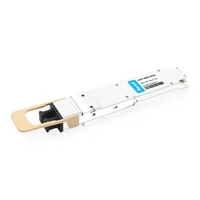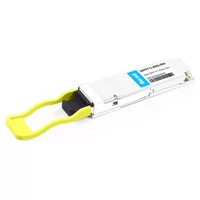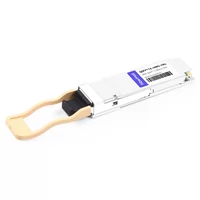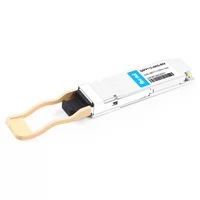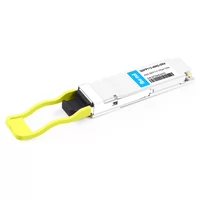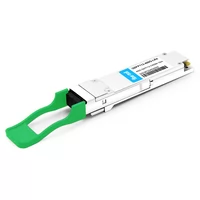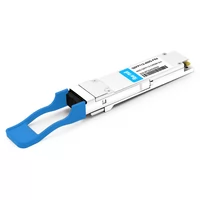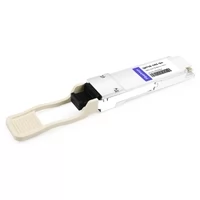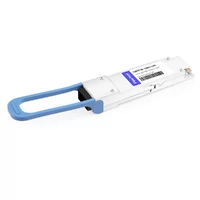The selection of fiber transceivers is vital for the efficiency and effectiveness of a network. In today’s fast-changing technology world, it is important that one understands different types of fiber transceivers to make wise decisions that will improve network performance and reliability. This article seeks to unveil various kinds of market-ready fiber optic modules by outlining their features, uses, and benefits. Having these details will enable network managers and IT experts to choose appropriate types of transceivers for specific operational needs, hence setting up their infrastructure in readiness for expansion or scalability in the days ahead.
Table of Contents
ToggleWhat Are the Different Types of Fiber Transceivers?
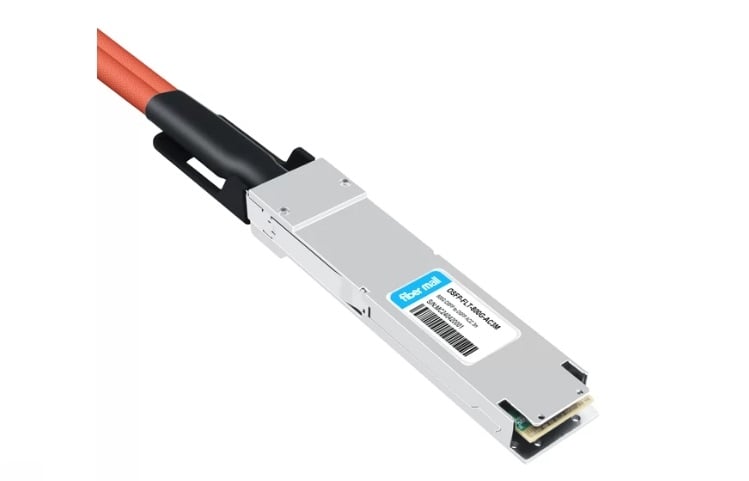
Understanding Fiber Optic Transceiver Types
Various kinds of fiber optic transceivers exist, which can be grouped in terms of data rate, transmission distance, and form factor. These are Small Form-factor Pluggable (SFP), Enhanced Small Form-factor Pluggable (SFP+), Quad Small Form-factor Pluggable (QSFP) and QSFP28. SFP transceivers can achieve speeds up to 1 Gbps and are used for short to medium-range applications. SFP+ transceivers support speeds up to 10 Gbps, thus enabling extended reach for more demanding applications. On the contrary, QSFP transceivers can support speeds up to 40Gbps designed for high-bandwidth enterprise networks while considering that QSFP28 supports speed levels of 100Gbps, mainly used in data centers and high-performance computing environments. However, one should know what their network requires before selecting a specific type of fiber transceiver.
Classification of Fiber Transceivers: Module Types and Form Factors
According to their individual characteristics and uses, fiber transceivers can be classified into different module types and form factors. The major groups are as follows:
- SFP (Small Form-factor Pluggable): These are small sized modules that can be easily plugged in or replaced without disrupting the entire system. They support data rates up to 1 Gbps which is suitable for short distance or medium range connections.
- SFP+ (Enhanced Small Form-factor Pluggable): It has the same size as SFP but supports higher data rates up to 10 Gbps for greater reach in more demanding networks.
- QSFP (Quad Small Form-factor Pluggable): This is a larger form factor capable of supporting data rates of up to 40Gbps, making it ideal for enterprise environments where heavy traffic is expected.
- QSFP28: An advanced version of QSFP that supports data rates of up to 100Gbps aimed at high-performance computing and data center applications.
Choosing the right module type and form factor is essential to ensure maximum network performance and scalability based on specific needs within your operational environment.
From SFP to QSFP: Identifying Key Differences
Comparing SFP with QSFP transceivers, there are some notable differences. First of all, data rates and capacity supported by each are significantly different. Generally SFP modules can support up to 1 Gbps while SFP+ modules can extend this to 10 Gbps. On the other hand, QSFP modules support much higher data rates where QSFP can reach up to 40 Gbps and QSFP28 attains speeds as high as 100 Gbps.
Secondly their physical form factors are not the same. While SFP or SFP+ is smaller which makes it suitable for environments with limited space availability; on the other hand QSFP (Quad Small Form-factor Pluggable) and its upgraded version i.e., QSFP28 are bigger in size designed for supporting higher bandwidths and density requirements.
Thirdly they are used in different areas because they have different applications and scalability too. For instance, normally, people use sfp/sfp+ for short-to-medium range network connections within enterprise environments, but on the contrary, Qsfp/qsfp28 being capable of handling larger volumes of data while delivering improved scalability makes them ideal candidates for high bandwidth applications such as those found in data centers or computer networks used for high-performance computing systems.
Therefore it is important to know these disparities so that one may optimize his/her network infrastructure effectively depending with what he/she wants; this will help achieve a good balance between performance, capacity and cost too.
Why Connector Type Matters in Fiber Transceivers
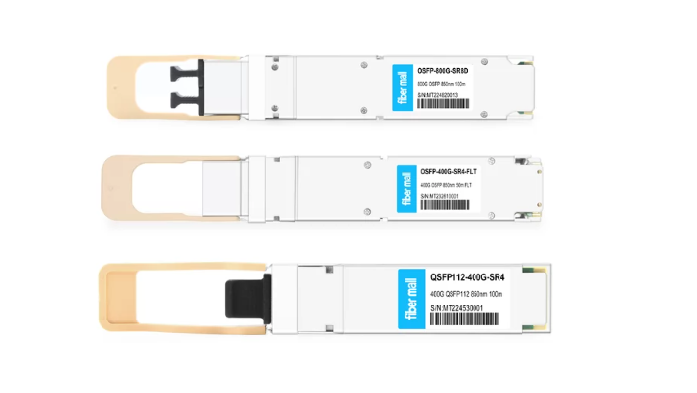
LC, SC, MPO: Navigating Fiber Optic Connector Types
Picking the right kind of fiber optic connector is very important if we want our network to work efficiently and reliably.
Small in size, LC (Lucent Connector) connectors are perfect for high-density applications. They have a 1.25mm ferrule and use a latch mechanism to ensure that the connection is secured. Because they are space-saving and easy to mount, LC connectors are widely used in modern data centers and telecom environments.
SC (Subscriber Connector) connectors possess a push-pull latching mechanism which aids in easy insertion and removal with their 2.5 mm ferrule designed primarily for enterprise networks as well as data communication applications especially those involving single-mode fibers.In comparison to the LC connector type, SC connectors have a larger form factor hence are typically not best suited for scenarios where there’s need for higher densities.
MPO (Multi-Fiber Push-On) connectors were created specifically with dense environments in mind; they can accommodate many fibers within one physical connection – usually around either 12 or 24 strands. That’s why they’re frequently employed on spine-leaf architectures within data centers where speed matters most – such as those used by Ethernet networks running at speeds greater than 40Gbps up to 100 Gbps.MPOs allow fast deployments along with high bandwidth capabilities required by different applications, including 40G/100G Ethernet.
Being aware of these different types of connectors together their specific uses will enable you make better decisions when planning network infrastructure growth thus ensuring maximum performance while still allowing scalability.
Impact of Connector Type on Network Performance
Regarding signal integrity, insertion loss, and return loss, the kind of connector chosen can greatly affect network performance. LC connectors have low insertion loss and high precision; hence, they are suitable for high-density environments where space is at a premium and ensure that signals are not much lost, which is vital to keep up with fast data transfer rates. Although larger than SC connectors, these types provide strong connections with moderate insertion loss, making them durable enough for areas that require less compactness but still need reliability as well as ease of use; this is especially true for MPOs, which were designed for multi-fiber configurations thus being necessary in high bandwidth applications due to their ability to manage cables efficiently while allowing quick deployment. In addition, those support Ethernet networks operating at higher speeds thereby reducing the chances of losing signals within a system while improving the overall throughput. Consequently it is important to select suitable connector types in order to optimize network efficiency as well as minimize signal losses but also ensure dependable connectivity that performs well.
Choosing the Right Connector for Your Optical Transceiver
To ensure that your network performs at its best, it is important to choose the right connector for your optical transceiver. This will need some contemplation and analysis from various reputable sources as follows:
- Matching: You must verify that the connector type matches with the transceiver specifications. This compact design can be used for high-density areas hence SFP and SFP+ commonly employs LC connectors while SC connectors are larger in size; therefore they work better in legacy systems which still support older transceivers.
- Performance Requirements: MPO connectors are recommended when a network needs more bandwidths with minimal signal losses. They enable very high data rates on one end by using many fibers thus becoming necessary for 40G or even 100G Ethernet where multiple fibers may be required.
- Application Environment: The environment within which the system is installed has an effect on what kind of cable should be used. For spacesaving in data centers and enterprise networks, LC connectors would be ideal while SC connectors would do well in places where strong connections are needed but for quick installations and easy management of cables then MPO connectors should be considered appropriate.
By looking into these three areas – compatibility, performance requirements, environmental conditions – one can easily come up with a decision that will lead to perfect integration of different optical transceivers in a network setup.
Exploring the Significance of Wavelength in Optical Transceivers
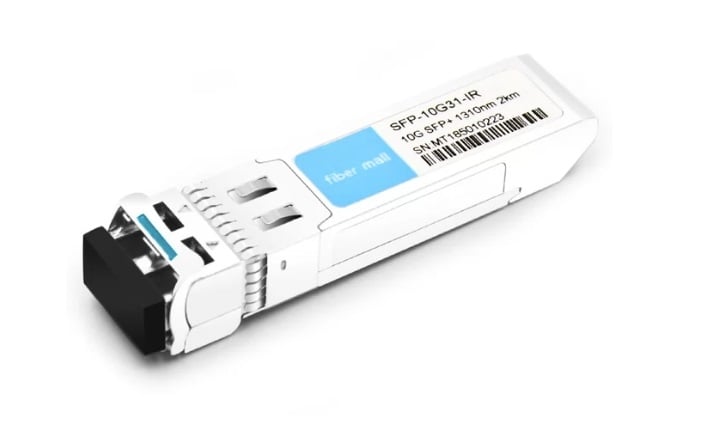
The Role of Wavelength in Data Transmission
The ability of optical transceivers to transmit data depends on wavelength. Typically, these devices work at certain wavelengths, such as 850 nm, 1310 nm, and 1550 nm, that are appropriate for different types of fiber optics and transmission distances. These wavelengths are selected because they minimize signal attenuation and dispersion which in turn improves data integrity over different ranges. For example, 850 nm is widely used in short-distance applications with multimode fibers, while 1310nm or 1550nm are better suited for longer distances using single-mode fibers due to their lower losses. Choosing the right wavelength is critical to optimizing network performance, minimizing errors, and ensuring efficient data transfer.
850nm vs. 1310nm: Matching Wavelength to Network Needs
Whether to use a 850 nm or 1310 nm wavelength depends on what your network demands. Short distance applications in multimode fiber setups usually require an 850 nm wavelength. It is cheaper and has wider bandwidth over short distances which are important in data centers and inter-building links.
On the other hand, a 1310nm wavelength is used for long-range transmission with single-mode fiber. It has lower signal attenuation and is hence more suitable for longer-reach applications such as metropolitan area networks (MANs) and long-haul communication systems. While it may need higher initial costs due to more sophisticated equipment required at this frequency, but it offers better performance for connections that span larger distances.
In conclusion, you should consider your network’s distance needs, budget limitations and desired outcomes with regards to performance so as to achieve effective data transfer and reliability of the network.
Single-Mode vs. Multi-Mode Fiber Transceivers
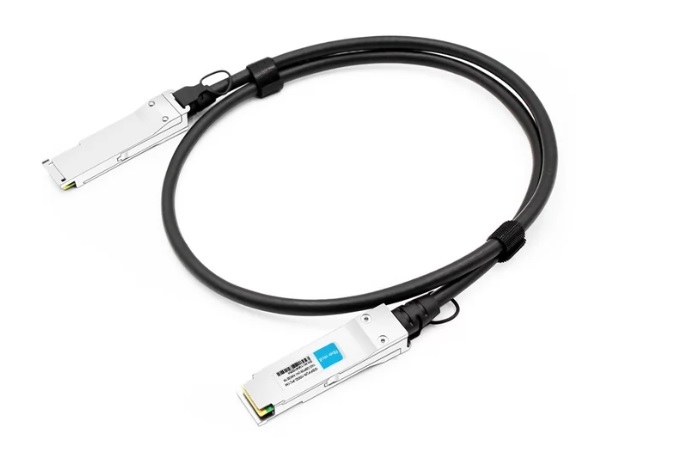
Determining the Best Fiber Type for Your Network
When selecting which fiber type is best for your network, you should also think about the specific performance requirements and use cases. In order to reduce attenuation and keep signal integrity over large distances, it’s a common practice to use single-mode fiber transceivers in long-range communication. These are perfect for WANs, MANs, or any other application where there is a need for wide bandwidth across great distances. On the contrary, multi-mode fiber transceivers work better when used in short range but with high bandwidth requirements like LANs (Local Area Networks), data centers, or connections inside buildings. They offer cost-effectiveness and easy installation, thus being convenient when transmission distances are not too far apart. Therefore, choosing the right type of fiber involves considering factors such as distance, budget, and network performance requirements so that data transmission can be optimized and network reliability ensured.
Comparing Transmission Speeds and Distances
When it comes to comparing transmission speeds and distances between single-mode and multi-mode fiber transceivers, single-mode fiber usually supports higher transmission speeds over longer distances. Single-mode fibers can transmit data at 10 Gbps, 40 Gbps, or even 100 Gbps over distances greater than 40 kilometers without significant loss of signal quality. This is why they are good for large network infrastructures and long-haul telecommunications.
On the flip side, multi-mode fibers are designed for shorter distances which are typically within a few kilometers. They support high data rates up to 10 Gbps but only over much smaller distances as compared to single mode fibers. Multi mode fiber transceivers are also generally cheaper and easier to install which makes them more suitable for use in data centers and LANs where required distance does not exceed the capabilities of the fiber.
To sum it up, whether one should go with either single-mode or multi-mode fiber depends on the needed transmission speeds as well as distances involved. Single Mode Fiber would be preferred when dealing with longer ranges and higher velocities while Multi Mode Fiber might be considered where cost effectiveness is key for short distance applications.
How to Decide Between Single-Mode and Multi-Mode
Picking between single-mode and multi-mode fiber relies on some factors:
- Distance requirement: If the network has to cover long distances (over 40km), then it is recommended to use single-mode fiber as it can keep signal integrity within such stretches. On another hand for shorter distances (usually less than two kilometers) multi mode fibers are appropriate.
- Budget constraint: In terms of installation and maintenance cost effectiveness tends to favor multi mode fiber hence making this an option for projects with limited funds. However, single mode fibers are costly but they offer better performance at longer ranges thereby justifying their higher prices in certain applications.
- Bandwidth needs: Consider the rates at which data will be transmitted through your system. For example, metropolitan area networks (MANs) or wide area networks (WANs) require high bandwidths of up to 100Gbps over vast distances, thus necessitating the usage of single-mode fibers, while local area networks (LANs) and data centers may suffice with lower capacities provided by multi-mode fibers.
- Network future proofing: Evaluate how much growth potential does your network have? It might be cheaper in the long run if you expect a lot more data traffic covering greater areas then invest on scalability offered by single modes fibres.
It’s only by considering these things that one can be able to decide whether they need to use multimode or simply one type of cable for their current as well future networking requirements.
Maximizing Network Efficiency with the Right Fiber Transceiver

Considerations for High-Speed Data Transfer: From Gigabit to 10 Gigabit Ethernet
When one moves from Gigabit Ethernet to 10 Gigabit Ethernet, there are several main things should be considered in order to achieve the best performance and efficiency of the network.
- Cabling Infrastructure: The type of cables used plays a big role. For 10 Gigabit Ethernet, copper networks are advised to use Cat6a or Cat7 cables, while single-mode or multi-mode fiber optics should be used for longer distances with higher data rates.
- Network Hardware: Switches, routers and NICs must all be upgraded to support higher data rates that come with 10 Gigabit Ethernet.
- Power Consumption: It is important to note that power consumption of 10-gigabit ethernet equipment increases. Consider power usage effectiveness (PUE) when you evaluate your current infrastructure’s cooling capacity against its energy efficiency.
- Latency and Throughput: Latency is significantly reduced by 10 gigabits per second, which greatly improves throughput. This is essential for real-time applications like video streaming, cloud computing, or virtual environments where speed matters most.
Take these points into consideration, and you will have successfully transitioned into 10 gigabits per second ethernet, thereby preparing your network for larger data volumes as well as future advancements in technology.
Ensuring Compatibility with Existing Network Equipment
Several crucial steps have to be followed to ensure that a 10 Gigabit Ethernet upgrade is compatible with existing network equipment. First, it is necessary to completely assess your current network infrastructure, which includes switches, routers, and NICs, so as to identify whether they are 10GbE compatible or not and if any upgrades are required. Second, confirm if the present cabling meets 10GbE requirements; upgrade to Cat6a or higher categories for copper-based networks while appropriate fiber optics should be used where necessary. Finally, you should also think about firmware as well as software updates for all devices on the network in order for them to support 10 Gbps specifications, too. These compatibility aspects can be systematically dealt with, thus enabling a smooth transition into high-speed networks.
The Future of Fiber Optic Networks: Trends and Technologies
The future of fiber optic networks is shown by many changing trends and advancing technologies. One trend is that data transmission speeds will continue to increase rapidly due to new technologies like Dense Wavelength Division Multiplexing (DWDM). This tech allows more than one light wavelength to be used, thus increasing bandwidth and efficiency by carrying large amounts of data on a single fiber.
Another important technology is the creation of bend-insensitive fibers which work well even if they are bent tightly or installed in harsh environments where normal cables would fail. This not only makes them more durable and versatile but also reduces signal loss and degradation risk.
Furthermore, the fusion between 5G networks and fiber optics has powerful effects on the telecommunications industry. In this case, 5G infrastructure relies on fiber optics as its backbone because it requires high speeds with low-latency connections for advanced applications such as smart cities and autonomous vehicles, among others that fall under the Internet of Things (IoT). With these two technologies working together, there will be unprecedented rates at which data can be transferred, leading to wider coverage, thereby opening up new opportunities in terms of technological advancements and digital transformation.
Organizations should keep themselves updated with such developments since it will help them prepare adequately for what lies ahead; where their network infrastructure must have the capacity to handle larger amounts of information while still supporting state-of-the-art applications.
Choosing the Appropriate Fiber Transceiver for Various Applications

Fiber Transceivers in Data Centers: Speed, Distance, and Connectivity
Data centers’ speeds, distances, and connections are mainly determined by fiber transceivers. High-speed transceivers are crucial for modern data centers in dealing with massive amounts of data that need to be transferred. This will enable throughputs of large volumes of information, thereby improving the efficiency of the whole network.
Different fiber transceivers have different distance capabilities where single mode ones can transmit data through a long range (over 100km) while multi-mode ones work best within shorter ranges such as 500m. It all depends with what is needed for any given infrastructure in terms of whether it should use single mode or multimode transceiver.
Connectivity is also important because these devices are made to work with many types of networking equipment like switches, routers, and servers, among others. When choosing which type to buy, compatibility and interoperability become very significant, thus ensuring smooth integration into an existing network setup. If used correctly, performance will be optimized, and reliability-enhanced scalability will be achieved so that even as technology advances further, they can still receive maximum support from data centers.
The Role of Optical Transceivers in Fiber to the Home (FTTH) Networks
In Fiber to the Home (FTTH) systems, optical transceivers are a key component of the network as they allow for high-speed internet connections that are also reliable. These transceivers convert electrical signals from homes into optical ones which can then travel over long distances using fiber optic cables. In FTTH networks, data is sent with minimum loss and maximum efficiency to ensure that bandwidth-intensive applications such as video conferencing, gaming, or streaming can be delivered directly to users’ premises.
Additionally, bi-directional communication is supported by transceivers used in FTTH networks, thus making simultaneous upstream and downstream data transmission possible. Such transmitters are able to work with different network devices like Optical Line Terminals (OLTs) or Optical Network Units (ONUs), thereby ensuring seamless connectivity and integration within the FTTH infrastructure. User experiences are improved, network reliability is heightened, and future-proof scalability is achieved when advanced optical transceiver technology is applied in these types of networks; this also helps meet the growing demand for faster home internet services, which can be relied upon at all times.
Specialized Transceivers for Specific Fiber Optic Networks
Different types of specialized transceivers are designed for different fiber optic networks. These various kinds are created to meet various needs; for example, long haul and metropolitan area networks use Dense Wavelength Division Multiplexing (DWDM) transceivers that can send many data channels through a single strand, thus utilizing more bandwidth. The use of few wavelengths as compared to DWDM is what makes Coarse Wavelength Division Multiplexing (CWDM) transceivers suitable for shorter distance communication and is also cost-effective.
BiDi transceivers fall into another class, which comes in handy when fiber availability becomes an issue. Here, two different wavelengths are utilized each for transmitting and receiving data over one strand of fiber, thereby reducing the infrastructure costs involved. In addition, there are MSPP (Multi-Service Provisioning Platform) transceivers designed specifically for use in legacy networks so that they can easily integrate with existing systems while still allowing room for upgradeability into more advanced technologies.
Distance requirement, bandwidth need or even existing network infrastructure may dictate the choice of these special purpose devices . Selecting the right type of transceiver ensures best performance across network at minimum costs while maintaining future growth options thus catering for all possible requirements during installation of optical fiber networks.
Reference sources
1. Fiber Optic Association – Understanding Fiber Transceiver Types for Network Optimization
Source Type: Online Resource
Summary: For network optimization, The Fiber Optic Association has written an exhaustive piece about fiber transceiver types. Different transceiver types are considered, including what they do and how well they work together; suggestions are also made regarding which should be used depending on one’s network needs. This is a helpful resource for anyone who wants more than just basic knowledge on this subject matter.
2. Journal of Lightwave Technology – Comparative Analysis of Fiber Transceiver Technologies
Source Type: Academic Journal
Summary: A research article published in the Journal of Lightwave Technology compares various fiber transceivers employed by present-day networks. In evaluating different performance metrics such as cost-effectiveness and scalability among others, it helps network engineers or other researchers make sound choices when selecting these devices for use in their networks. Hence, this academic source contributes to expanding the understanding of options available with regard to optical-fiber transmission systems.
3. Cisco – Fiber Transceiver Product Guide for Network Professionals
Source Type: Manufacturer Website
Summary: Cisco has created an all-inclusive product guide for fiber transceivers, designed specifically for network professionals, on its official website. The manual offers detailed descriptions of Cisco’s range of SFP modules – including compatibility issues, specifications, and where they can be deployed most effectively within a given infrastructure setup. Additionally, Cisco describes recent developments made within fiber optic technology itself and outlines how these new capabilities will improve overall network reliability and performance levels. This manufacturer’s literature would, therefore, prove invaluable to anyone seeking industry-leading solutions concerning data communications equipment.
Frequently Asked Questions (FAQs)
Q: What are the different types of transceivers in a fiber optic network?
A: SFP transceivers, QSFP28, and small form-factor pluggable modules are among some of the basic kinds of transceivers used in a fiber optic network. They work by converting electrical signals into optical ones, which can then be transmitted over an optical fiber cable. Different data rates are supported by each type, and they can be used with either single-mode or multimode fiber optic cables.
Q: How do I select the appropriate fiber optic cable for my network?
A: The size, speed, and distance requirements of your network will determine what kind of fiber optic cable is best suited for it. Single-mode fibers are able to carry signals at higher bandwidths, hence ideal for long-distance transmissions. Conversely, multimode fibers should be used where a lower data rate is required within short distances. Note that you also consider which transceiver you have chosen to use with your network while choosing the right cable fit.
Q: What’s the difference between single-mode and multimode fiber optic cables?
A: In terms of core sizes as well as how light is transmitted through them, there are two main categories, namely, single-mode and multi-mode fibers (SMF/MMF). The former has smaller cores facilitating only one mode of light propagation, thus making it suitable for long-distance communication systems that operate at very high wavelengths, such as those used by CATV systems, but these latter ones do not support this feature due to the larger core size required to support multiple modes.
Q: Please talk about the importance of cable types and their compatibility within a fiber optic network.
A: Cable types play a vital role in any given fiber optics network because they influence the ability of such systems to transmit optical signals effectively. Using the right cable type that matches well with your network’s transceiver or device will ensure the highest possible throughput rates (data), minimum signal attenuation(loss) & least EMI leakages. Compatibility is also key as it involves connectors, form-factors, etc, cables & transceivers should match each other perfectly.
Q: What are SFP transceivers and how do they differ from QSFP28?
A: Small Form-Factor Pluggable transceivers or SFP transceivers are modules that can be plugged into a network device so as to enable them to transmit data through optical fiber cables. They are small-sized, hot-swappable devices that find wide applications in telecom and datacom networks. On the other hand, QSFP28 is an upgraded version of the SFP module designed to support higher data rates than its predecessor — up to 100 Gbps. It can transmit over single-mode or multimode fibers and supports different protocols, making it suitable for high-bandwidth requirements.
Q: How do fiber optic transceivers convert electrical signals into optical signals?
A: Electrical signals that flow through fiber optic cables are converted into light pulses by means of the Fiber Optic Transceiver’s transmitter component with an integrated laser diode or LED. The electrical signal serves as a modulating input for the light source inside the unit, thus producing modulated light waves carried by fiber optics cables, known as transmission media where, whereas at the other end, the Photodiode converts it back into its original form, completing this way whole process of sending information through space.
Q: What factors influence whether a single fiber or a pair of fibers should be used in an optical network design?
A: The choice between using single fiber or dual fibers in an optical network depends mainly on cost considerations and what kind of data needs to be transmitted over distance. Single fibers can save bandwidth because they allow bi-directional communication using different wavelengths for send/receive pairs, effectively doubling capacity but requiring complex equipment for multiplexing/demultiplexing channels at each endpoint while using separate fibers lessens compatibility issues between new & existing systems but increases installation complexity & costs by using more cable stock on the same route. So, the budget plays an important role here, too, along with the scalability options provided by the available infrastructure.
Q: Are there any cables specifically made for high-speed data transfers?
A: Yes, certain cable types are designed with high-speed data rates in mind. For example, single-mode fiber optic cables have a small core that reduces the dispersion of light signals making them suitable for long-distance communication networks where higher data rates are required. On the other hand, hardware such as transceivers like qsfp28 can support fast speeds up to 100 Gbps and beyond so it’s necessary to integrate these components into your high speed optical network design if you want it work properly.
Related Products:
-
 NVIDIA MMS4X00-NM-FLT Compatible 800G Twin-port OSFP 2x400G Flat Top PAM4 1310nm 500m DOM Dual MTP/MPO-12 SMF Optical Transceiver Module
$1199.00
NVIDIA MMS4X00-NM-FLT Compatible 800G Twin-port OSFP 2x400G Flat Top PAM4 1310nm 500m DOM Dual MTP/MPO-12 SMF Optical Transceiver Module
$1199.00
-
 NVIDIA MMA4Z00-NS-FLT Compatible 800Gb/s Twin-port OSFP 2x400G SR8 PAM4 850nm 100m DOM Dual MPO-12 MMF Optical Transceiver Module
$650.00
NVIDIA MMA4Z00-NS-FLT Compatible 800Gb/s Twin-port OSFP 2x400G SR8 PAM4 850nm 100m DOM Dual MPO-12 MMF Optical Transceiver Module
$650.00
-
 NVIDIA MMS4X00-NM Compatible 800Gb/s Twin-port OSFP 2x400G PAM4 1310nm 500m DOM Dual MTP/MPO-12 SMF Optical Transceiver Module
$900.00
NVIDIA MMS4X00-NM Compatible 800Gb/s Twin-port OSFP 2x400G PAM4 1310nm 500m DOM Dual MTP/MPO-12 SMF Optical Transceiver Module
$900.00
-
 NVIDIA MMA4Z00-NS Compatible 800Gb/s Twin-port OSFP 2x400G SR8 PAM4 850nm 100m DOM Dual MPO-12 MMF Optical Transceiver Module
$650.00
NVIDIA MMA4Z00-NS Compatible 800Gb/s Twin-port OSFP 2x400G SR8 PAM4 850nm 100m DOM Dual MPO-12 MMF Optical Transceiver Module
$650.00
-
 NVIDIA MMS1Z00-NS400 Compatible 400G NDR QSFP112 DR4 PAM4 1310nm 500m MPO-12 with FEC Optical Transceiver Module
$700.00
NVIDIA MMS1Z00-NS400 Compatible 400G NDR QSFP112 DR4 PAM4 1310nm 500m MPO-12 with FEC Optical Transceiver Module
$700.00
-
 NVIDIA MMS4X00-NS400 Compatible 400G OSFP DR4 Flat Top PAM4 1310nm MTP/MPO-12 500m SMF FEC Optical Transceiver Module
$700.00
NVIDIA MMS4X00-NS400 Compatible 400G OSFP DR4 Flat Top PAM4 1310nm MTP/MPO-12 500m SMF FEC Optical Transceiver Module
$700.00
-
 NVIDIA MMA1Z00-NS400 Compatible 400G QSFP112 VR4 PAM4 850nm 50m MTP/MPO-12 OM4 FEC Optical Transceiver Module
$550.00
NVIDIA MMA1Z00-NS400 Compatible 400G QSFP112 VR4 PAM4 850nm 50m MTP/MPO-12 OM4 FEC Optical Transceiver Module
$550.00
-
 NVIDIA MMA4Z00-NS400 Compatible 400G OSFP SR4 Flat Top PAM4 850nm 30m on OM3/50m on OM4 MTP/MPO-12 Multimode FEC Optical Transceiver Module
$550.00
NVIDIA MMA4Z00-NS400 Compatible 400G OSFP SR4 Flat Top PAM4 850nm 30m on OM3/50m on OM4 MTP/MPO-12 Multimode FEC Optical Transceiver Module
$550.00
-
 QSFP112-400G-SR4 400G QSFP112 SR4 PAM4 850nm 100m MTP/MPO-12 OM3 FEC Optical Transceiver Module
$450.00
QSFP112-400G-SR4 400G QSFP112 SR4 PAM4 850nm 100m MTP/MPO-12 OM3 FEC Optical Transceiver Module
$450.00
-
 QSFP112-400G-DR4 400G QSFP112 DR4 PAM4 1310nm 500m MTP/MPO-12 with KP4 FEC Optical Transceiver Module
$650.00
QSFP112-400G-DR4 400G QSFP112 DR4 PAM4 1310nm 500m MTP/MPO-12 with KP4 FEC Optical Transceiver Module
$650.00
-
 QSFP112-400G-LR4 400G QSFP112 LR4 PAM4 CWDM 10km Duplex LC SMF FEC Optical Transceiver Module
$1500.00
QSFP112-400G-LR4 400G QSFP112 LR4 PAM4 CWDM 10km Duplex LC SMF FEC Optical Transceiver Module
$1500.00
-
 QSFP112-400G-FR4 400G QSFP112 FR4 PAM4 CWDM 2km Duplex LC SMF FEC Optical Transceiver Module
$750.00
QSFP112-400G-FR4 400G QSFP112 FR4 PAM4 CWDM 2km Duplex LC SMF FEC Optical Transceiver Module
$750.00
-
 QSFP28-100G-SR4 100G QSFP28 SR4 850nm 100m MTP/MPO MMF DDM Transceiver Module
$40.00
QSFP28-100G-SR4 100G QSFP28 SR4 850nm 100m MTP/MPO MMF DDM Transceiver Module
$40.00
-
 QSFP28-100G-LR4 100G QSFP28 LR4 1310nm (LAN WDM) 10km LC SMF DDM Transceiver Module
$285.00
QSFP28-100G-LR4 100G QSFP28 LR4 1310nm (LAN WDM) 10km LC SMF DDM Transceiver Module
$285.00

